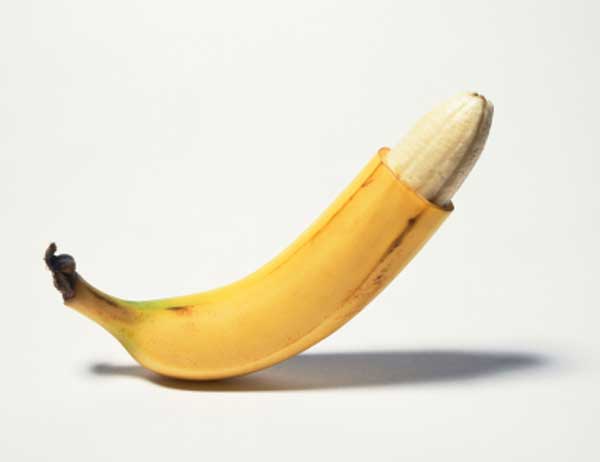Male circumcision is a surgical procedure to remove the foreskin of the penis. This shaft of skin covers the head of the penis but retracts naturally during sex, or can be pulled back for cleaning. Circumcisions have been performed for years, for cultural and other reasons. While most people know what circumcision is, many are vague on the finer details of this simple procedure, including the risks and benefits.
If you’re a new or expecting parent you may like a little more information on the ‘ins and outs’ of this tradition, to help you decide about circumcising your baby boy. Though circumcision is a common and simple operation, like all surgical procedures it carries (usually minor) risks, including bleeding, infection and pain. Although extremely rare, nasty complications do occur; like having to chop the poor fella off. So it’s only natural that parents need reliable information to help them decide whether or not to circumcise baby.
Penis familiaris? Getting to know the foreskin
The foreskin, also known as the prepuce, is the fold of skin which hangs over the penis when it is flaccid. When boys are little, the foreskin is still attached to the head of the penis and can’t be retracted. In adult men the foreskin is not attached to the head of the penis and is loose enough to fold back and allow the penis to expand during erection. The foreskin is highly responsive to sexual stimulation and the natural moisture it provides acts like a natural lube … bonus.
However, the foreskin is not just there for sexual pleasure, it also protects the penis, in the same way eyelids protect your eyes. How? By covering the head of the penis, the foreskin reduces irritation and the chance of contamination. Other protective functions are not well understood but the foreskin is thought to play a role in immunity.
History of the no-foreskin fan-club
 Circumcision isn’t necessary for human health but it certainly has a long history. It was practiced in parts of Africa over 5,000 years ago, during ‘coming of age’ ceremonies and in the Middle East at least 2,000 years ago. In Western cultures circumcision became popular in the 20th century because it was thought to stop boys from masturbating and protect against cancer and mental disorders – but these claims have since been thoroughly disproven. It is also thought that circumcision was performed as a sign of social status in Western culture. Because well-to-do individuals were circumcised, others followed suit. Being circumcised indicated a ‘well-to-do’ willy. But perhaps it was more a sign of a painful penis- back in the day the foreskin was usually snipped off without anaesthesia!
Circumcision isn’t necessary for human health but it certainly has a long history. It was practiced in parts of Africa over 5,000 years ago, during ‘coming of age’ ceremonies and in the Middle East at least 2,000 years ago. In Western cultures circumcision became popular in the 20th century because it was thought to stop boys from masturbating and protect against cancer and mental disorders – but these claims have since been thoroughly disproven. It is also thought that circumcision was performed as a sign of social status in Western culture. Because well-to-do individuals were circumcised, others followed suit. Being circumcised indicated a ‘well-to-do’ willy. But perhaps it was more a sign of a painful penis- back in the day the foreskin was usually snipped off without anaesthesia!
Today circumcision is largely performed for cultural or religious reasons, such as in Jewish and Muslim faiths. Most medical practitioners are opposed to circumcision as a routine procedure, especially when it is performed without anaesthesia. Since 1971, the Australian Paediatric Association adopted an anti-circumcision policy after many of the false medical beliefs about circumcision were disproven by scientific studies. Because there are no medical reasons to circumcise, the procedure is not covered by Medicare.
Foreskin facts
A considerable minority of parents opt to cover the cost of their baby’s circumcision. In Australia, it is estimated that currently 10–20% of baby boys are circumcised, although historically circumcision has been more popular. More than half (59%) of the adult men living in Australia are circumcised, as are 69% of those that were born in Australia. Circumcision is less prevalent amongst younger men (under 20 years of age), of whom 32% are circumcised.
Globally, around 25% of the male population is circumcised, although it varies markedly between countries. Most men in the US are circumcised (60%), but only a small proportion of men are circumcised in many European countries (e.g. 6% in England and 2% in Scandinavia). Amongst Jews and Muslims, almost all males are circumcised.
Why circumcise? Understanding the health benefits
These days circumcision is only performed for medical reasons in men who have rare conditions, such as phimosis, a condition in which the foreskin is too small to retract over the head of the penis. This condition arises rarely in puberty or adulthood. For baby boys there is no medical reason to circumcise- it does not improve health or hygiene, and the risks associated with the procedure are considered greater than the very small benefits which circumcision may bring about.
Foreskin hygiene
If you’re trying to decide whether or not to snip your little boy, you’re probably interested in knowing more about whether or not it’s possible to keep an uncircumcised penis clean. While doctors once claimed that circumcision was needed to promote penile hygiene, this was based more on opinion than scientific fact. Scientific studies have shown that it is in fact very easy to keep the penis hygienically clean with the foreskin intact.
In the first years of life when the foreskin is still attached, it doesn’t need any special cleaning, actually cleaning under the foreskin at this time is not recommended- it would hurt because the foreskin would need to be retracted. By about 5 years of age, the foreskin has separated and can be retracted and this is when cleaning the space between the head of the penis and the foreskin should begin. Cleaning an uncircumcised penis is a simple matter of retracting the foreskin over the head of the penis and cleaning with soap and water. Once cleaning is complete the foreskin is replaced. And that’s it.
Health benefits?
 So are there any other benefits you should consider when weighing up the pros and cons of circumcising your baby boy? Yes, but it’s important to remember that the benefits are minor.
So are there any other benefits you should consider when weighing up the pros and cons of circumcising your baby boy? Yes, but it’s important to remember that the benefits are minor.
The key benefit is a reduced risk of infections, such as urinary tract infections (UTIs) and sexually transmitted infections (SITs) like genital herpes and syphilis. Boys have about a 1% chance of developing a urinary tract infection in childhood. Both UTIs and STIs can be easily treated with antibiotics if they do occur. The risk of STI does not arise until sexual activity commences. While there are high rates of STI in Australia, there are less ‘choppy’ techniques for preventing them, like using condoms.
HIV/AIDS is a particularly serious STI because it is currently incurable. Circumcision has been shown to reduce the risk of a man contracting HIV during heterosexual sex but it is not known if the risk is reduced in men who have sex with men. In sub-Saharan countries where HIV is highly prevalent (>15%) and spreads mainly through heterosexual sex, circumcision for HIV prevention is recommended. However in Australia where overall HIV prevalence is low and it is most commonly spread through homosexual sex, HIV is not recommended for HIV infection.
Other health benefits of newborn circumcision include a reduced risk of penile cancer and human papillomavirus (HPV), the virus which causes penile and cervical cancer. Penile cancer is a serious condition, but it is very rare. Only around 1 in every 100,000 men develops penile cancer. Circumcision cannot be justified if the sole reason for performing it is prevention of cancer.
Risks? Relatively minor and rare but shouldn’t be discounted
Now you know that the benefits of circumcision are minimal, here’s the low down on the risks involved. Circumcision is a surgical procedure and like all other surgeries comes with some risks. Most circumcisions these days are carried out under anaesthesia, so the baby doesn’t feel pain. This is an important step in making circumcision more ethical- no one wants their baby to feel pain unnecessarily. However, administering anaesthetic medicines carries some risks, and these must be considered when weighing up the risks and benefits of the procedure.
The other main risks associated with circumcision are infection and bleeding. Sound like fairly minor risks? True, but in rare cases infections from circumcision can be serious. They may lead to septicaemia (systemic infection which can be life threatening) and in very rare cases amputation of the entire penis. Having your child circumcised in a hospital which has all the proper hygiene equipment is an important way to minimise these risks as much as possible. However 1-5% of circumcisions performed in optimal conditions still result in complications like infection.
While the risk of minor (and rarely serious) complications of infection is real, you can rest assured that some of the claims made about circumcision risks are folk tales. For example there is no scientific evidence to support claims that circumcision has an adverse psychological effect, nor is there evidence to support claims that circumcision negatively effects sexual function or enjoyment. Both circumcised and uncircumcised boys have an equal chance of growing up emotionally happy and healthy and sexually fulfilled.
Willy or won’t he? The decision about circumcising your baby
 Despite the lack of medical benefit from circumcision a considerable proportion (10-20%) of Australian parents choose to snip. Some of these may do so for religious reasons, for example if they are Jewish or Muslim. Fathers might choose circumcision for a son because they themselves are circumcised, and the procedure will mean their son will look the same, or carries on a tradition. While the Australian Paediatric Association has an anti-circumcision for medical reasons policy, it acknowledges that many parents desire circumcision for non-medical reasons, and respects the right of parents to choose circumcision if it is desired for cultural, religious or other reasons.
Despite the lack of medical benefit from circumcision a considerable proportion (10-20%) of Australian parents choose to snip. Some of these may do so for religious reasons, for example if they are Jewish or Muslim. Fathers might choose circumcision for a son because they themselves are circumcised, and the procedure will mean their son will look the same, or carries on a tradition. While the Australian Paediatric Association has an anti-circumcision for medical reasons policy, it acknowledges that many parents desire circumcision for non-medical reasons, and respects the right of parents to choose circumcision if it is desired for cultural, religious or other reasons.
Let’s get ethical- human rights and circumcising baby
As circumcision is now considered to be optional and carries the risk of pain or disfigurement, some people argue that circumcision is a violation of a child’s human rights. Generally individuals undergoing surgery are required to provide their consent for the procedure, after having the scientific evidence for risks and benefits explained. But baby boys can’t sign a consent form any more than they can comprehend the risks and benefits of the surgery.
So, given that the risks of circumcisions are relatively low (it’s nothing like open heart surgery!) parents are given the right to decide about circumcision on their child’s behalf, just as they are given the right to decide whether or not their child undergoes other medical procedures. This right is recognised internationally.
Circumcising your baby boy- your right to decide
As a parent you have the right, indeed the responsibility, to decide: to snip or not to snip? It can be a difficult decision, and knowing the risks and benefits of the procedure will not necessarily make it any easier. However, it will ensure you make your decision for the right reasons. Cultural and religious reasons are important and legitimate and if circumcision is part of your culture, perhaps the best decision is to snip.
However, if you have no personal reasons for circumcising and were considering it only as a measure to protect your child’s health, knowing that the risks of circumcision outweigh the benefits should make your decision easier. Circumcised males are no healthier than uncircumcised males, as babies or later in life. The procedure can be performed at a later date in the rare event that medical conditions like phimosis arise. But remember, circumcised or uncircumcised, your baby boy can grow up happy, healthy and sexually fulfilled.
References
- Marieb E, Hoehn K, Anatomy and Physiology. 3rd ed. Benjamin Cummings; 2008.
- The Royal Australasian College of Physicians- Paediatrics and Child Health Division. Policy Statement on Circumcision. 2004. [cited 2009, June 15] Available from: (URL Link)
- UNAIDS & WHO. New Data on Male Circumcision and HIV Prevention: Policy and Programme implications, Conclusions and recommendations of the WHO/UNAIDS Technical Consultation on Male Circumcision and HIV Prevention. 2007. [cited 17 January 2012] available from: (PDF File)
- National Centre in HIV Epidemiology and Clinical Research. HIV/AIDS, viral hepatitis and sexually transmissible infections in Australia Annual Surveillance Report 2008, National Centre in HIV Epidemiology and Clinical Research, 2008, The University of New South Wales, Sydney, NSW. [cited 17 January 2012]. Available from: (PDF File)
- Rennie, S. Muula, A.S. Westreich, D. Male circumcision and HIV prevention: ethical, medical and public health trade-offs in low income countries. J Med Ethics. 2007;33:357-61. (Abstract)
- Weiss, H.A. Thomas, S.L. Munabi, S.K. Hayes, R.J. Male circumcision and risk of syphilis, chancroid and genital herpes: a systematic review and meta-analysis. Sex Trans Inf. 2006;82:101-10. (Abstract | Full Text)
- Moses, S. Bailey, R.C. Ronald, A.R. Male circumcision: assessment of health risks and benefits. Sex Trans Inf. 1998:74:368-73. (Abstract)
- Vincent, L. Boys will be boys: traditional Xhosa male circumcision, HIV and sexual socialisation in Contemporary South Africa. Culture, Health and Sexuality. 2008;10(5):431-46. (Abstract)
- Szabo, R. Short, R.V. How does male circumcision protect against HIV infection? BMJ. 2000;320:1592-4. (Full Text)
- Belmaine, S.P. Circumcision. MJA. 1971;1:1148. (Full Text)
- Richters, J. Smith, A.M.A. de Visser, R.O. et al. Circumcision in Australia: prevalence and effects on sexual health. Int J STD & AIDS. 2006;17:547-554 (Abstract)
- American Academy of Paediatrics Task Force on Circumcision. Circumcision Policy Statement. Pediatrics. 1999;103(3):686-72. (Full Text)
- Sexual Health Society of Victoria, National Management Guidelines for Sexually Transmitted Infections, 2008, [cited 17 January 2012] available from: (PDF File)
- Viens, A.M. Value judgment, harm and religious liberty. J Med Ethics. 2004;30:241-7. (Full Text)
- Cold, C.J. Taylor, J.R. The prepuce. Br J Urol. 1999;83(S1):34-44.
- Leitch IOW. Circumcision- a continuing enigma. Aust Pediat J. 1970; 6: 59-65. (Full Text)
- Singh-Grewal, G. Macdessi, J. Craig, J. Circumcision for the prevention of urinary tract infection in boys: a systematic review of randomised trials and observational studies. Arch Dis Child. 2005;90:853-8.
- Position Statement: Routine Circumcision of Normal Male Infants and Boys. Australian College of Paediatrics. Parkville, Victoria: 1996, [cited 2009, July 25], available from: (Full Text)




 (14 votes, average: 3.79 out of 5)
(14 votes, average: 3.79 out of 5) 






